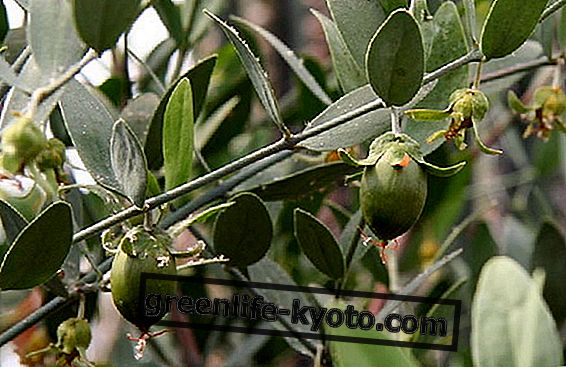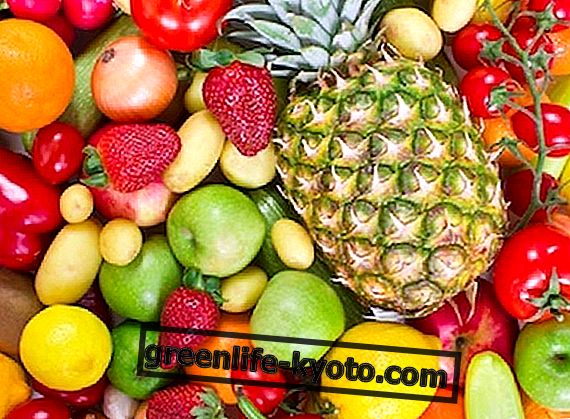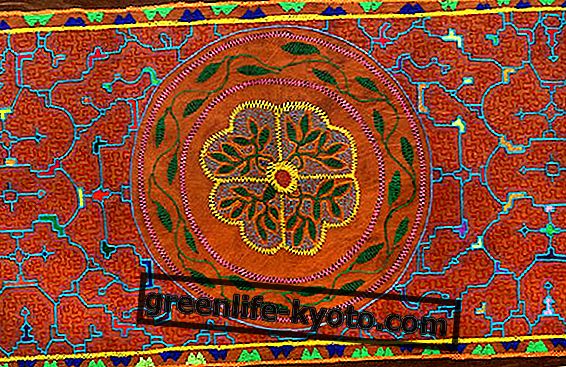
Jojoba oil is a liquid wax produced by squeezing the seeds of Simmondsia chinensis and free of glycerine (triglycerides) used for centuries by Native Americans to soothe tissue irritation, and inflammation of the mucous membranes of the eyes and throat.
This vegetable lipid is composed of a mixture of wax esters, vitamin E, B-complex vitamins, minerals such as zinc, copper and iodine . Jojoba oil is colorless and odorless and solidifies at temperatures below 10 ° C. It owes its stability to heat and high resistance to rancidity, to tocopherols as well as to the presence of natural antioxidants. Each molecule consists of a fatty acid and a lipo-alcoholic group connected by an ester bond. 98% of the fatty acid molecules are unsaturated.
From the food point of view, jojoba oil is not toxic, but it is absolutely non-digestible, therefore it acts as an inert mass in the digestive tract, with an unpleasantly laxative effect.
Unlike all other vegetable oils, its molecular form is linear and not branched; this makes it chemically very similar to human sebum . Sebum is a fatty substance composed predominantly of cholesterol and fatty acids, which serves to keep the skin hydrated and protect it from attack by external factors (bacteria, sun, wind, chemicals in the air), thus preventing it from drying out. and be angry. When the natural hydro-lipid mantle of the skin is missing, (due to the use of aggressive detergents, sunlamps or lack of hydration) the consequences are irritation or flaking.
Properties and benefits of jojoba oil
Jojoba oil revitalizes, regenerates and soothes irritated skin, strengthens it and prevents wrinkles. Its ease of absorption and its great ability to penetrate through the small pores of the epidermis, leaving it smooth and silky, gives jojoba oil an excellent moisturizing action.
For this reason it is used, in pure natural cosmetics, or associated with other vegetable oils to make them more absorbable, or as a carrier for essential oils, or as a valuable ingredient in homemade creams.
Face: its ability to penetrate perfectly into the skin without greasing makes it particularly suitable for the skin of the face, to counteract the premature aging of its tissues. In the case of dry, sensitive and delicate skin, which is the most exposed to the formation of wrinkles due to its thinness, jojoba oil counteracts the effects of time, in particular prevents and reduces wrinkles . It should be applied daily to clean skin with a light massage, absolute or added to the usual day cream.
Hair : it is advisable to distribute a few drops of jojoba oil over their entire length, massaging gently at the ends. Then leave on for about an hour and then wash. Its use helps nourish and strengthen hair, preventing the formation of split ends. For this reason it can be used, a few drops, after shampooing on dry hair, to polish and soften them.
5 vegetable waxes and their cosmetic uses
Description of the plant
( Simmondsia chinensis - Simmondsiaceae)
Originally from the desert areas of southern Arizona, north-western Mexico, and southern California, it grows in the desert, in hot places up to 60 ° it is also widespread in Argentina, Peru, Mexico, Brazil and Chile.
Woody shrub has a prostrate habit in poor soil conditions (60-80 cm); in rich and deep soil conditions it is a true erect tree (6-8 m). The leaves are leathery, oval, opposite, of a robust bluish green color, covered with a waxy texture. The flowers are very small, white-yellowish and with 5-6 sepals, but without petals. Fertilization is anemophilous, that is carried by the wind. The plant is dioecious, so it carries the male and female flowers on different plants (dubious phrase, clarify it with Ax).
The fruits are oval, minimally triangular capsules, partially enclosed in sheaths constituted by the residues of the sepals, containing from one to three seeds of the size of the peanut seeds. The seeds contain a thick liquid oil (wax) in high percentage (about 54%), are eaten by squirrels and rabbits, other rodents and large birds. The plant produces seeds consistently from the fifth to sixth year after sowing, and is very long-lived, living over 200-250 years.
READ ALSO
Jojoba oil among vegetable oils that respect the skin
Other articles on jojoba oil
> How to make eye makeup remover with jojoba oil
> The other properties and benefits of jojoba oil
> Jojoba oil as a remedy for dandruff
> Jojoba oil among natural anti-aging treatments
> Coconut and jojoba oil: discover the differences












